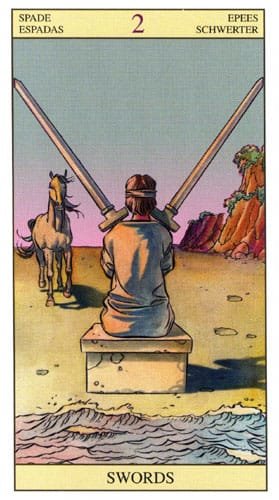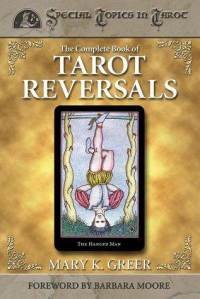Tarot card reversals happen to boggle the best among us. It is often quite challenging to interpret reversed cards in readings. Plus, reversed cards, just like the cards themselves can be interpreted using different approaches. Which method is right? Which interpretation is correct?
Honestly, where the Tarot is concerned, your intuition is always your best guide for answering these questions. But if you need a book that is completely devoted to answering all your reversed card questions, then The Complete Book of Tarot Reversals by Mary K. Greer is where you must turn to.
The Complete Book of Tarot Reversals starts features the original ‘reversed’ card, The Hanged Man on its cover. Within the pages of this book, you will find some really interesting approaches (at least 12), the card interpretations (of course), some interesting spreads, a sample reading, and even a section devoted to the ‘Heroine’s Journey’.
Lets talk a little bit more about these various sections.
Introduction

The introduction section in this book, naturally, introduces the topic of reversals in Tarot readings. However, along with that, this section also introduces you to some specialized terminologies that often come up while learning how to read Tarot cards. For example, this section gives us a brief overview of terms such as Archetypes, Elemental Dignities, Projection, Psyche, Shadow, Synchronicity, and my personal favorite, Enantiodromia.
Chapter One: A Different Point of View
It is in this chapter that Mary K. Greer goes on to discuss the meanings and import of the different terms that she introduced in the previous chapter. She puts it all in the perspective of reversals, so you don’t go off track. Then she talks about the different ways to get reversed cards in your readings, and what you can do when you get a majority of reversed cards in your readings.
Chapter Two: Using Reversals
This is, what I consider to be the meat-and-bones chapter for reading this book. It is in this section that Mary K. Greer goes on to discuss the 12 different approaches with which one can look at, and interpret, the reversed cards in our Tarot card readings. Along with these 12 methods, she also talks about some additional methods that can be used. She then goes on to explain how one can go about determining which reversed meaning to use in our reading.
Many Tarot card readers believe that one can change one’s future with the use of free will. In this chapter, you will also find a discussion on how you can ‘rectify’ a reversal in your reading.
Chapter Two: The Interpretations

The following few sections discuss the interpretations that can be obtained from all the reversed cards in your Tarot deck using the different methods specified above. This section has the traditional, upright interpretations followed by the reversed interpretations of each card from the Major Arcana, the Minor Arcana and the Court Cards. Each reversed interpretation is also followed by a short paragraph that lists out the traditional reversed meanings for that card as well.
Chapter Three: Spreads
Now, in this section, we will see the practical implementation of all the knowledge and learning that we have gained in the previous sections. A variety of spreads, starting from the basic 3-Card spread and moving to a problem solving spread and the very interesting Hanged Man spread are explained in great detail.
Chapter Four: Reading For Sarah
This section has a sample reading that features several reversed cards in a classic Celtic Cross spread.
Appendices
Now, here are some goodies worth having! The Appendices contain some very interesting information that you must have! They include:
- Reversed Keywords – a cheat sheet of all things Tarot-ically reversed – a list of all the cards and their reversed meanings.
- Suit and Number Keywords – here is a quick list of each element and its reversed meaning, and each number and its reversed meaning.
- Elemental Dignities – this section has a list of the elemental correspondences of the Major Arcana.
- The Heroine’s Journey – this section is perhaps the most interesting of all. If the journey of the Major Arcana (Upright) is referred to as the ‘Journey of the Fool’ or the ‘Hero’s Journey’, then the journey of the Major Arcana (Reversed) can be called the ‘Heroine’s Journey’, right? It is a very interesting approach and the journey described is really very engrossing. (From a story writer’s point of view, this is some really good stuff!)
My Take
This book is really an eye opener. It most definitely helped me see things in a much better light than before.
When I learned how to read Tarot cards, I just looked at the reversed cards as a, well, reversal of all the things that the upright card would talk about. As such, I never got boggled down with reversed cards. But as my knowledge grew, so did my questions. And this book came along at just the right time in my journey with the cards, and answered so many of those ‘reversed’ questions that I had been having. 🙂
Your Turn…
It doesn’t matter if you find reversed cards tough or easy in your readings. This book is a must-have if you want to learn more so as to expand your ‘reversed’ horizons and enhance the quality of your readings.
Do you find it tough to read reversed cards? What approaches do you take with reversals? Do you just avoid reading reversals altogether? Have you read this book? Did you enjoy it too? Lets get talking in the comments section below.










